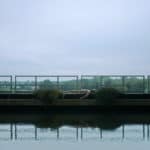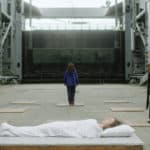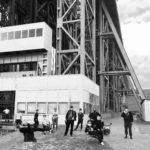Additional Info
Director Biography: Michael Fetter Nathansky was born in Cologne in 1993. He spent his youth in Germany and Spain. Since 2013, he studies Directing at the Film University KONRAD WOLF Babelsberg. His graduation film Gabi premiered at the 67th Berlinale in the section Perspektive Deutsches Kino and won the German Short Film Award 2017. On top of that, in the same year, Michael was nominated for the young talents award (Nachwuchspreis) of Studio Hamburg as well as he won the young talents award of federal state North Rhine-Westphalia.
In 2018 he co-founded with Virginia Martin and Anna-Sophie Philippi the production company Contando Films with which he realised his master's degree film Sag du es mir (You Tell Me). In 2019 the feature film premiered at the Festival of German Film in Ludwigshafen where it won the main award. In the same year, Michael was nominated for the First Steps Award. The film was also awarded at the festivals in Lünen, Mainz and Ahrenshoop and started in cinemas in 2020. Michael's short documentary Un cuento sin ti (A Story Without You) premiered in 2019 at the Duisburger Filmwoche and received the main award in the category "Short Films and Medium Length".
In 2020, Michael was part of the official selection of the Berlinale Talents programme.
Director Statement:
It is difficult to describe how an idea comes to me, as it is as banal as it is complex. Usually a cinematic desire accumulates unconsciously over years, which then becomes nameable through the confrontation with a concrete image, a concrete place or music. And if, in addition, a gut feeling grows that promises that this idea will haunt me for a long time, then I know that the idea has convinced me. But my own work only really starts afterwards.
Because I firmly believe that every idea has a kind of logic, formula, or even task within it that needs to be found out.
At the same time, I believe just as strongly that you can't summarize a film in a formula.
But since I believe that by failure you can get the closest to things, I'd like to try a formula here for fun.
Ship lift (a+b) + Flamenco (c+d) + own vision (ship lift x Flamenco) = FUNCTIONALITY OF THE IDEA
The Ship Lift Even if you look at it for just a few seconds, it is immediately clear that this building is more than just a building where ships are lifted. Its size is too incomprehensible, its location in the middle of nowhere in Brandenburg is too bizarre, and the permanent changes of perspectives and light incidence are too surprising. In this case, the thought that is always appealing to me, "This could also be something completely different", is therefore much less an original, personal discovery than a commission that the building sooner or later forces upon every viewer. If you want to use the ship lift in a film just as a scenery, it could be anything: from a dystopian science-fiction cosmos to a steely labyrinth during a car chase. But if you want to make the ship lift itself the protagonist, you must not only ask yourself what it looks like, but above all what it "does" at its core. And this is again very simple and at the same time so incredibly ambiguous: it rises and falls and thereby darkens and illuminates.
If we then take the ship lift seriously as a "living" instance, we are talking about a figure that reveals things to us, hides them, sets them in motion and does all this with an unstoppable regularity. Capturing this mixture of mechanism and character is thus the first part of the assignment.
Flamenco For me, the "second" element in a film usually comes from the fact that it has to act as a kind of antagonist to the first element. Antagonist, because it is supposed to be a contrast to the first element and yet it has to be connected deep inside. Here there is a brief moment when you involve yourself in the development process, when you make the decision to use flamenco as a "second element", but as soon as you have done so, you are immediately obliged to submit to the rules of the "flamenco spirit", as well as the "figure" of the ship lift.
Of course, both elements have several impressive facets, but the crucial point is the question of the points of contact between flamenco and the ship lift. This is also easy to find once you have had the pleasure of watching flamenco dancers live. Their dance steps reveal a pride that can be transformed into tenderness at any time and a surprising beauty that seems to arise almost from harshness.The power of the dance steps create a feeling similar to the power of the ship lift: acoustically and visually.
And then you look at the formula again. Now it reads more concretely: Ship lift (figure moving things between light and darkness) + Flamenco (figure between hardness and tenderness) + own vision (ship lift x Flamenco) = FUNCTIONALITY OF THE IDEA
My own vision My own vision did not have to do much anymore. Above all, it had to react to the first two elements. And if light, darkness, hardness, tenderness, regularity, above and below are already hanging in the air, the themes of death and farewell feel like a logical consequence.
The true art in this approach was to follow the stage directions of the ship lift and flamenco.
Producer: Virginia Martin
Writer: Michael Fetter Nathansky
Cast: Anna Castillo








